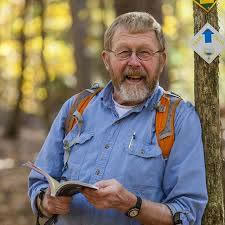A Yankee Notebook
NUMBER 2268
January 5, 2025
The Cold Old Days
EAST MONTPELIER, VT – I’ve looked out the windows quite a lot this past week, and each time the thought sweeps across my mind: Now, this is the way it’s supposed to be. Snow everywhere, and not just transitory, but settled in to stay a while. Thermometers at ten degrees or below. It feels as though a cherished friend has returned home.
We’ve all seen on the internet old photos of logging camp crews standing with their cook, clerk, and boss outside their winter shelter. Snow piles up all around them, but they’re only about ankle-deep in the trodden yard. The cook wears her apron and smiles demurely; the cookee, fresh from washing his dishes, wears an air of meekness the camp boss wears a black fedora; and the shanty boys stand together with their axes and peaveys, a dark crowd in suspenders, wool pants, and high-top boots. If you know groups of men, you can tell instantly if it’s a happy camp or not.
The photo had to have been taken on Sunday. On no other day would anyone in the camp have been free to stand around having a picture taken. But the weekly day of rest was sacred, a time to wash and mend socks (Imagine the aroma of two dozen pairs of well-broken-in wool socks drying on the rack beside the stove); a time to mend tears and worn spots in thick wool pants; a time to try to ease the pain of cracked fingers (lard was one nostrum; needle and heavy thread, amazingly, were another); a time to replenish tobacco supplies; a time to yarn and sing songs (one of my favorites is an irreverent tribute to the camp cook: “She’s short, fat, and stout without any mistake, and the boys call her Nellie, the belle of Long Lake.”).
I’m pretty sure that if I’d been born 75 years earlier and in a rural setting, I’d’ve gone into the camps for the winter – cracked fingers, lice, cigarette smoke, stinky bunkroom, and all. It wasn’t much money, but that was hardly the point. A winter in the woods was the guarantee of a wad of cash in the spring, and if a man then went down the river with the log drive and survived, there was even more at payoff, and he’d be home in time for the spring plowing. The romance of such a life probably escapes most people, just as does the beauty of our currently snowy yards and streets. But old men who’d once lived it loved to talk about it decades afterward.
When I spent three winters working at the Lake Placid bobsled run around the end of the 1950s, many of my coworkers were elderly alumni of the logging camps. They’d been scooped up at the unemployment office in Saranac Lake and put to work building and maintaining the icy run till the spring sun got the better of our collective efforts. We all wore the same duds: heavy wool “Malone-cloth” pants, rubber boots with extra socks, long johns, wool shirts, checked wool jacket, and a hunting hat with ear flaps. It sounds dreary, but you could tell a man a long way off by the way he wore all that gear and the way he moved (or didn’t).
Cold weather, the colder the better, was our ally. The ice harvest on the Cascade Ponds was easier, making slush for plastering the parabolic curves of the turns, and the all-night spraying by a quiet bunch of elderly gnomes turned the run hard as steel. The occasional thaws were our enemy. The ice softened, and the sleds’ runners cut into our precious creation. As the man on the phones all up and down the run, I’d get the instruction to “tell Calvin there’s a cut on the lower runner going into Twelve.”
We here in central Vermont are just approaching the coldest part of the winter, five to six weeks after the solstice, and this past one has been our coldest so far. The subject is on everybody’s lips. But we old folks, who ought to remember what real cold was like, seem to have either forgotten or lost our fighting spirit: our winter toughness; what the Finns call sisu. Just this morning at the supermarket I heard an old couple complaining that the temperature was only a little above zero.
Most likely the shock of thirty or forty below has faded from their memories: the good old days of folks burning their houses down by tackling frozen pipes with propane torches; the nights of carrying the car battery inside to save whatever little spark it had left; waiting on cold mornings for someone else to get up first and stir the stove into cherry-red life; wading out through waist-deep snow to feed the stock.
If the good old days were actually tougher than this milder weather we’re now living with, they were nevertheless the days that we were young and active (you had to be, to avoid freezing to death where you stood) and happy. Happy to be able to get down on our knees in the snow to wrestle with tire chains. Ten more weeks now till spring!


